Hotline |
ICDs |
Build Status |
Build Loaded |
Wind Farms |
Radar Operations Center
Software Engineering
The ROC Software Engineering (ROC/SWE) section provides a variety of support for users of the WSR-88D system. The principle support includes the development, maintenance, enhancement, and problem analysis of software for WSR-88D operational systems. Software Engineers are continuously implementing and testing software modifications that have been requested by NEXRAD users through their respective agencies: the Department of Defense, the Department of Transportation, and the Department of Commerce. Software Engineering also corrects software defects affecting field operations, and applies security Operating System Updates to maintain our authorization to operate.
Software Engineering's workload is primarily divided between the components of the NEXRAD WSR-88D: the Radar Data Acquisition (RDA), the Radar Products Generator (RPG) and the Master System Control Function (MSCF). The MSCF hosts operator user interfaces to the RDA and RPG, providing command, control and status monitoring for the WSR-88D system.
Software Engineering maintains the Archive Level 2 monitoring and radar data distribution software, also known as National Level 2 (NL2). The NL2 project is responsible for ensuring valuable WSR-88D radar data is reliably distributed to the Level 2 user community in real-time. Software Engineering also maintains a Level 2 status page showing Level 2 statistics including radar status, operating mode, and data distribution latency values for all WSR-88D and TDWR/SPG network sites (see https://www.weather.gov/nl2/).
Software Engineering assists with GIS-related projects such as wind farm proposal analyses and radar coverage maps, and blockage data. These help determine impacts to a radar and assist with radar move and low elevation angle studies.
News & Information - Current Software Engineering Activities:
-
RDA/RPG Build 22.0:
- RDA/RPG is primarily a migration of Red Hat Enterprise Linux (RHEL) 7 to RHEL 8 but also includes numerous bug fixes and minor enhancements.
- Build 22 will include improvements to the FAA's Icing Hazards Layers (IHL), and the Super-Resolution Data-Quality Edited Algorithm and Product (SRQ).
- Build 22 will remove Clear Air VCP 32 from the baseline. Site-specific VCPs are being added for Paducah, KY (Base Tilt of 0.3 deg elevation), Pendleton, OR (Base Tilt of 0.2 deg elevation), Springfield, MO (Base Tilt of 0.2 deg elevation), Corpus Christi, TX (Base Tilt of 0.3 deg elevation), and Grand Junction, CO (Base Tilt of 0.0 deg elevation).
- Build 22 will include improvements to the velocity dealiasing algorithm in environments of high shear. It also includes changes to support long-term software maintenance.
- Build 22 adds an RDA Control Command to turn off the sending of RDA logs to the RPG. This could be used to reduce wideband utilization during heavy wideband loads. RDA logs are currently sent from the RPG to the ROC via LDM to support field operations and troubleshooting.
- Build 22 adds minor improvements to the SZ2 algorithm used in VCPs 212, 215, 112, and 35.
- Build 22 will include full support for the Receiver/Signal Processor (RSP) replacement. This allows for the RSP deployment schedule to be untied to Build 22 software deployment.
- Build 22 will automate the Default Storm Speed/Direction from Model Data. The update time will be displayed on the RPG HCI Environmental Data Editor and included in the Shift Change Checklist (SCC) product.
- Build 22 will apply the RPG estimate of Initial System Differential Phase (ISDP) in the DP preprocessor by default.
- Build 22 will generate the Super Resolution Digital Velocity product (154) on all elevation angles of the VCP. The products above the split cuts will be identical to the Digital Velocity product (99).
- Build 22 has been deployed.
-
RDA/RPG Build 22.1:
- Build 22.1 is primarily a security update but will also include VCP definitions for lower elevations angles at Birmingham, AL (KBMX: 0.4 deg) and Mobile, AL (KMOB: 0.2 deg). Build 22.1 also fixes a problem running local (RDA) VCP 112
- Build 22.1 has been deployed.
-
RDA/RPG Build 23.0:
- Build 23.0 will allow the MSCF/RPG Operator the ability to release RDA (Local) control to the RPG (Remote). This capability will be password protected.
- Build 23.0 will include the VCP number in the RDA Status message associated with the Remote VCP Received acknowledgment. The VCP number will be added to the Remote VCP Received acknowledgment message posted to the RPG Status Log.
- Build 23.0 will include improvements to the Dual Pol Algorithms. The RPG-estimated ISDP (ISDPE) will reset whenever the ISDP value changes at the RDA, the ISDPE will be applied by default and the Vertical Profile of Reflectivity Correction (VPRC) will be on by default.
- Build 23.0 will fix a bug in the RPG that caused the Power Removed Control (PRC) product from being generated.
- Build 23.0 will remove the following unused products from the RPG: 1) Layer Composite Reflectivity Maximum (LRM, Code 65), 2) Radar Code Message (RCM, Code 74), 3) Composite Reflectivity Edit for AP (CRE, Code 98), and 4) Clutter Likelihood Doppler (CLV, Code 133).
- Build 23.0 will add a new Long Pulse VCP 34. VCP 34 will execute in under 9 mins, scan at the same angles as VCP 35 but will be capped at 4.5 deg elevation, and will maintain similar data accuracy as VCP 31.
- Build 23.0 will include several RPG HCI ported from X/Motif to GTK+. The functionality will be preserved. The look and feel will be slightly different.
- Build 23.0 is currently in formal Operations Test and is scheduled for deployment in Fall 2024.
-
NL2 Build 14.0:
- NL2 Build 14.0 is currently scheduled to be deployed in late April 2024 with security updates for RHEL8, restored SPG latency data, updated data decoders to support RDA/RPG Build 23, updated internal IP addresses, restored data feed to top tier client NCIE, and an updated connection to the ROC testbed SPG system.


